
 |
Author: Dr. Kimberly Huynh D.C. February 29, 2024 · 6 min |

Back pain is prevalent in our fast-paced and often sedentary life, with the World Health Organization estimating that 60 to 85% of people live sedentary lifestyles. It can restrict movements, causing pain and making daily activities challenging. Research estimates that 84 percent of adults experience low back pain at some point in their lives [1]. Whether you are dealing with persistent back pain or facing repeated low back injuries, these could be signs of an underlying issue—a weak core.
Read on to learn the connection between the core and low back, real-life cases seen in the clinic, along with exercises to do and equally important, exercises to approach with caution.

Contrary to thought, the spine is not a standalone structure. It depends on a complex network of muscles and ligaments to maintain stability, balance, and strength, supporting our everyday movements. Poor core strength can result in persistent back issues. These problems may include a lack of spinal support, poor posture, compromised stability— leaving the spine more susceptible to excessive movement and strain, muscle imbalances, inadequate support for functional movements, and overcompensation by other structures such as muscles of the back and the spine leading, ultimately leading to low back pain.
A strong core can help maintain balance, and help avoid awkward movements leading to unwanted strains or sprains. Not only does having a strong core enhance stability, but also enables our body to channel forces and stress through the muscular system rather than directly impacting the spine. In other words, a strong core acts as a protective mechanism contributing to a lower likelihood of back discomfort, and can help our spine and extremities to function optimally and safely.
Here are a few cases we encounter in our clinic and how they benefited from chiropractic therapy (names and ages changed for confidentiality purposes):
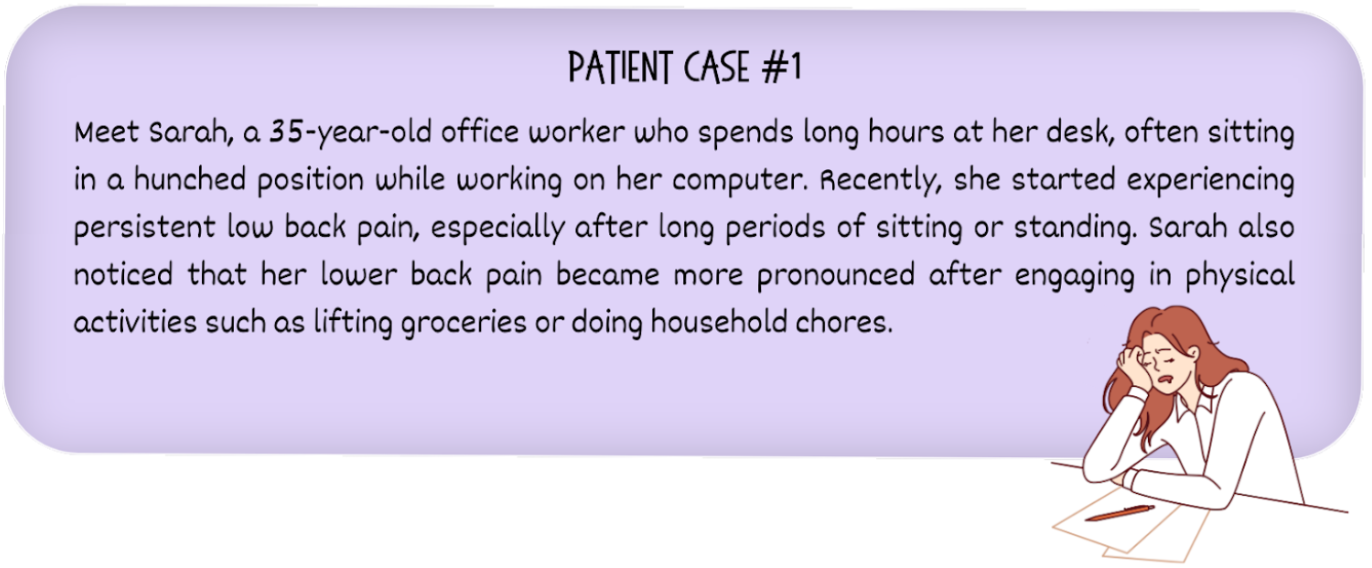
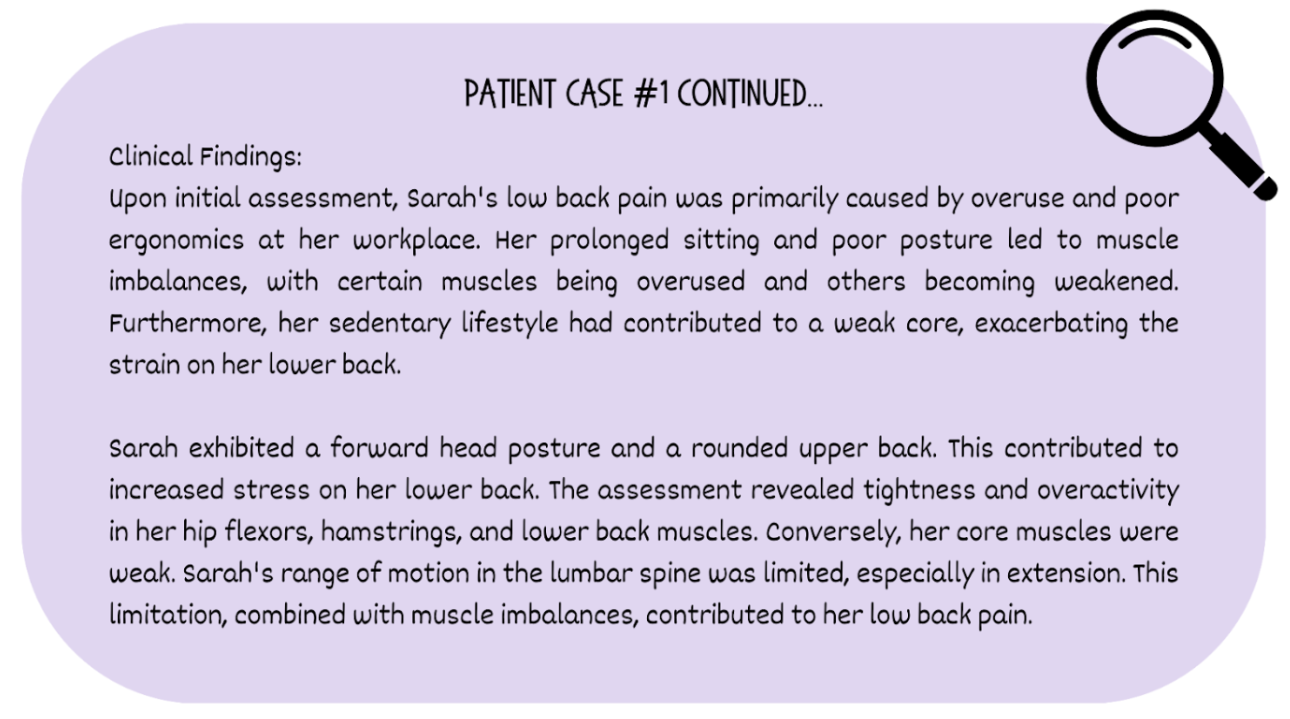
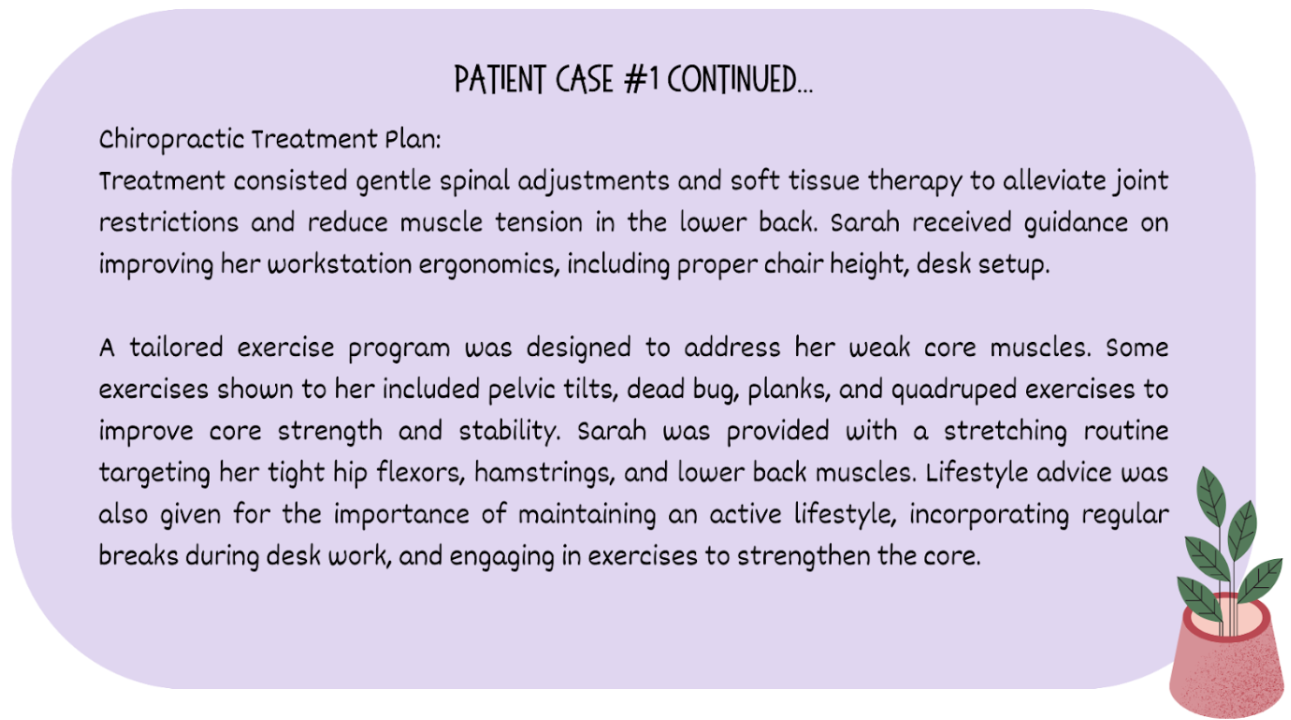
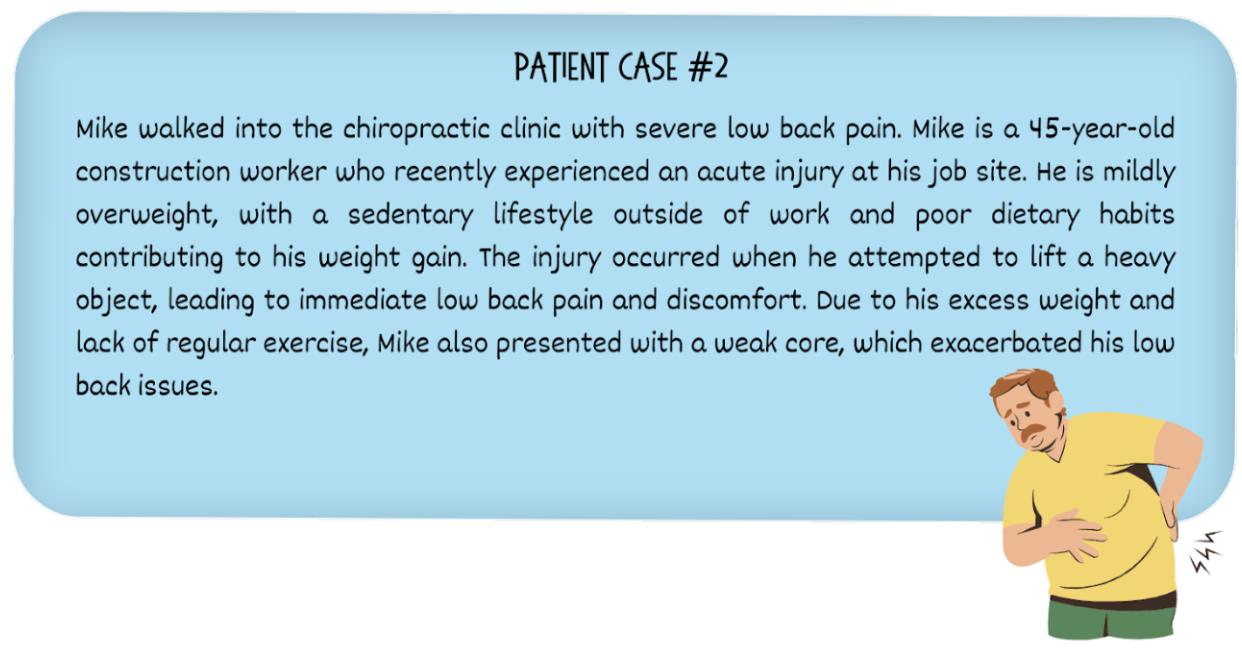
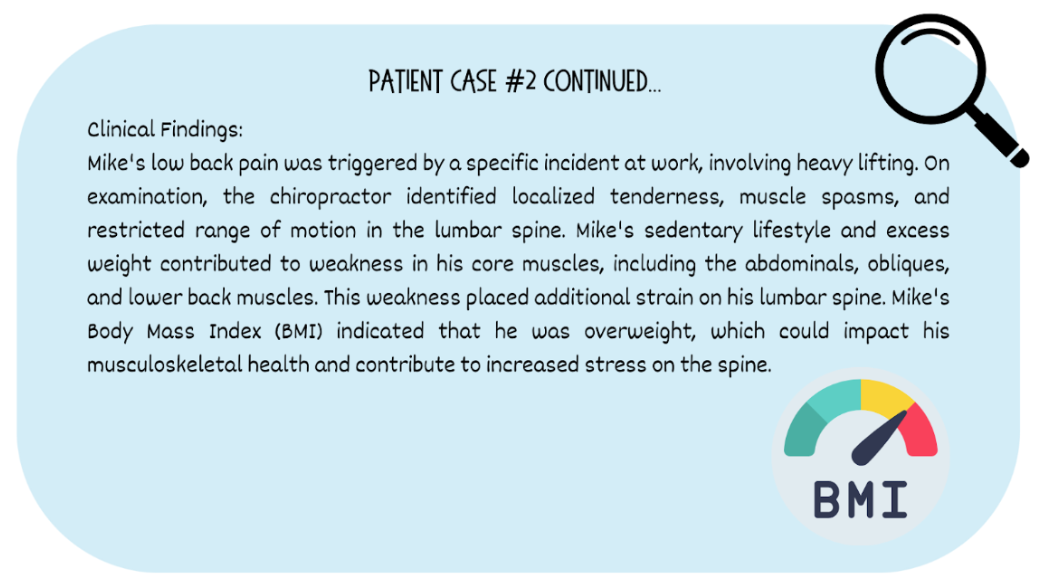
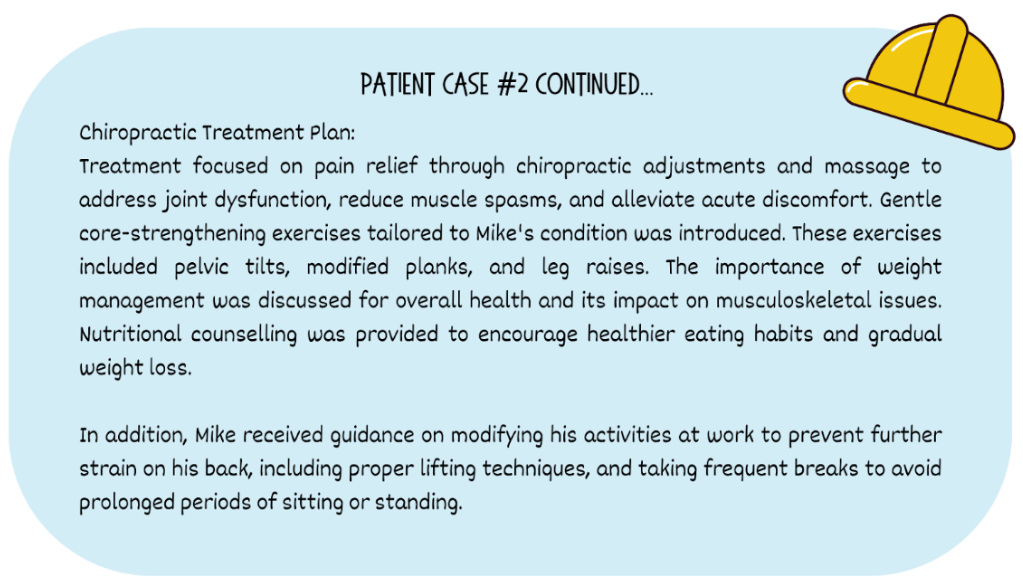
Protecting our back means more than just avoiding carrying heavy items and taking stretch breaks often. Recognizing the importance of strengthening our core is one thing, but taking the initial steps to get started is another.
The core is made up of deep abdominal muscles, back muscles, glute muscles, pelvic floor muscles, and diaphragm. Determining which core exercise to include and which one to avoid depends on various factors, including fitness level, existing health conditions, and personal preferences. However, in general core exercises should aim to strengthen the muscles and stabilize our spine while being safe.
Here are some general recommendations often given at the clinic:
DO’S - (Spine-safe exercises)
The Basics
- Neutral Pelvis
- Hip Hinge
- Abdominal Bracing
- Abdominal Breathing
- Therapeutic stretches
Core Exercises:
- Planks
- Bridges
- Quadruped
- Dead Bug
- Squats
- Leg lifts
DON’TS - (Core exercises to approach with caution)
Sometimes the most popular core exercises may not be the safest for our back. Exercises that are high-risk, meaning they strain other parts of the body or do not promote spinal stability, especially when performed with improper form, include:
- Sit-ups
- Crunches
- Bicycle crunches
- Oblique crunches with weights
- Russian twists
- Back extensions
Unfortunately, these commonly performed exercises are not the best choice when looking to add strength, stability, and functionality to your core and back.
Always consult with a healthcare provider or fitness professional before starting a new exercise routine, especially if there are existing health concerns or injuries. Additionally, listen to your body, perform exercises with proper form, and modify or avoid any movements that cause discomfort or pain.
Through a combination of therapeutic chiropractic adjustments, soft tissue therapy, personalized safe and effective exercises, and lifestyle modifications, most low back pain will gradually improve. We can also help with addressing any underlying causes to help promote long-term spine health. Regular follow-ups are generally recommended to monitor progress and make necessary adjustments to the treatment plan.
At Paradise Chiropractic Health & Wellness clinic, our experienced practitioners can treat your back concerns effectively, and in addition give you at-home advice for better self-management.
For a complimentary consultation or any other inquiries give us a call at (604) 496-0626, email at
info@paradisechiropractic.ca, or book online at https://paradisechiropractic.janeapp.com.